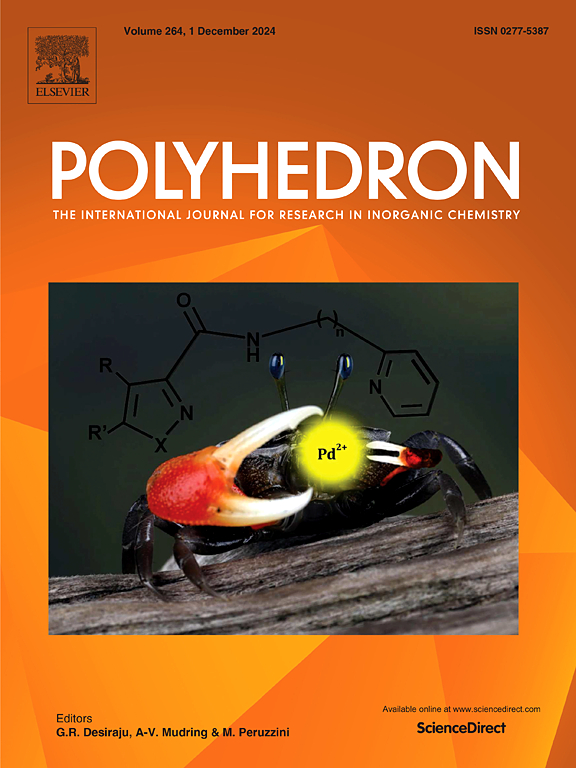Sodium salt of boron-substituted first keggin-type polyoxometalate; synthesis, crystal structure and investigation of antimicrobial activities
IF 2.4
3区 化学
Q2 CHEMISTRY, INORGANIC & NUCLEAR
引用次数: 0
Abstract
This study aims to investigate the antimicrobial activity of the boron-containing polyoxometalate (BPOM) Na7[H1.5BW12O40]∙6en (1), synthesized as a single crystal. The structural and thermal properties of this novel BPOM were thoroughly analyzed using FT-IR, TGA, and X-ray diffraction (XRD) techniques. The incorporation of boron into these structures is believed to enhance their antimicrobial properties. The antimicrobial activity of the compound was evaluated against two Gram-positive bacteria (Staphylococcus aureus, Bacillus cereus), three Gram-negative bacteria (Escherichia coli, Legionella spp., Legionella pneumophila sg 2–15), and a yeast (Candida albicans) using disc diffusion and tube dilution (Minimal Inhibition Concentration) methods. The results demonstrated that the synthesized compound exhibited significant antimicrobial activity, particularly against Bacillus cereus (Gram-positive) and Legionella spp. and Legionella pneumophila sg 2–15 (Gram-negative).

求助全文
约1分钟内获得全文
求助全文
来源期刊

Polyhedron
化学-晶体学
CiteScore
4.90
自引率
7.70%
发文量
515
审稿时长
2 months
期刊介绍:
Polyhedron publishes original, fundamental, experimental and theoretical work of the highest quality in all the major areas of inorganic chemistry. This includes synthetic chemistry, coordination chemistry, organometallic chemistry, bioinorganic chemistry, and solid-state and materials chemistry.
Papers should be significant pieces of work, and all new compounds must be appropriately characterized. The inclusion of single-crystal X-ray structural data is strongly encouraged, but papers reporting only the X-ray structure determination of a single compound will usually not be considered. Papers on solid-state or materials chemistry will be expected to have a significant molecular chemistry component (such as the synthesis and characterization of the molecular precursors and/or a systematic study of the use of different precursors or reaction conditions) or demonstrate a cutting-edge application (for example inorganic materials for energy applications). Papers dealing only with stability constants are not considered.
 求助内容:
求助内容: 应助结果提醒方式:
应助结果提醒方式:


